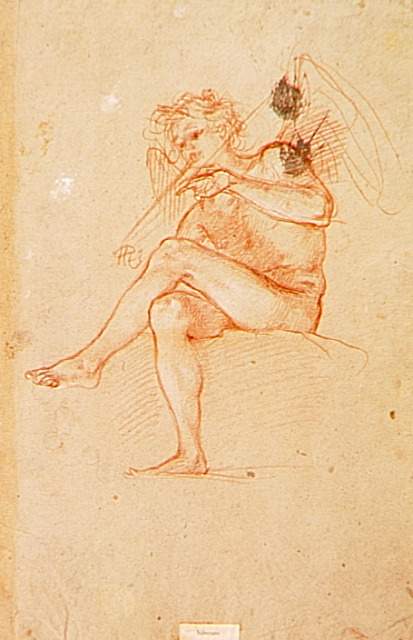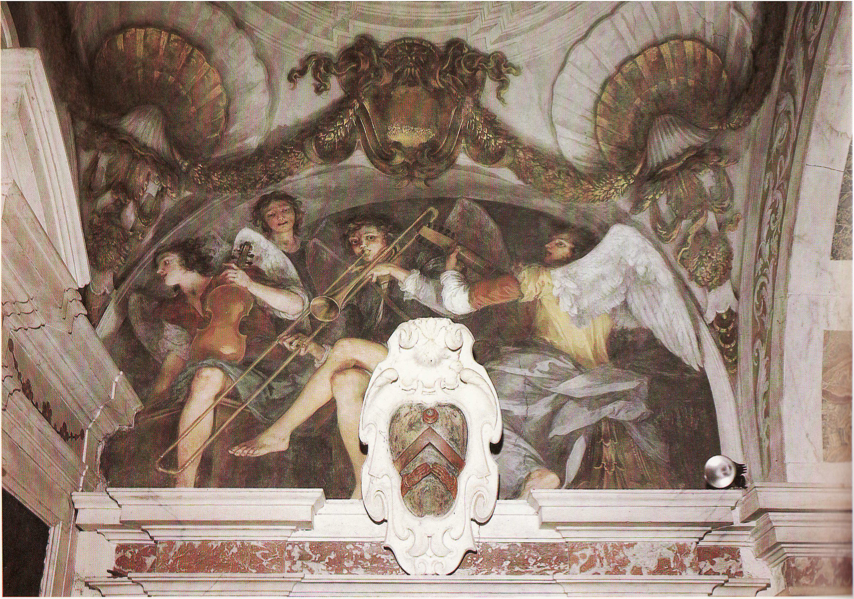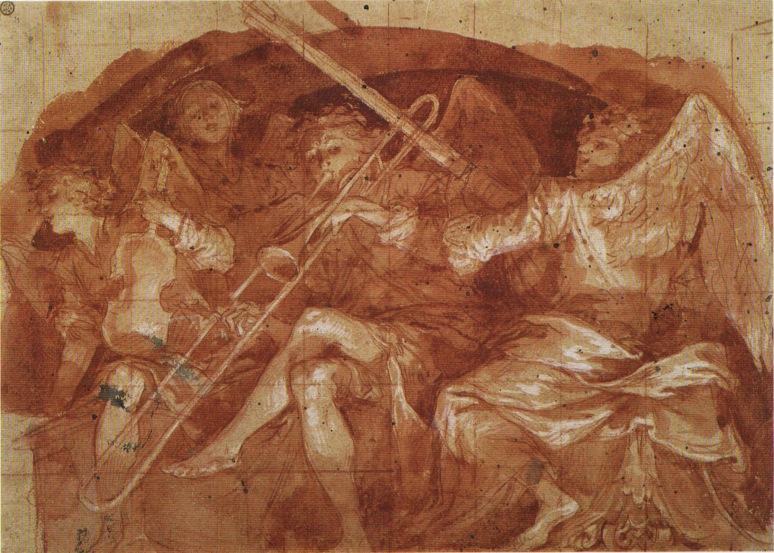Several weeks ago I blogged about a red chalk drawing by an artist named Il Volterrano (also known variously as Baldassare Franceschini and Franceschini Baldassare detto Volterrano). The image, a preparatory drawing for a 17th-century Florentine fresco, features trombone prominently among two other angel-musicians (with a possible additional vocalist). Included with the documentation about the chalk drawing in the source I referenced were sources leading to the culminating painting, which had a commission date of 1644, as well as references to additional sketches presumably leading up to the chalk drawing. I followed sources in both directions, leading to a total of four different images from three different sources and revealing a work of art with an intriguing evolution. The amount of preparatory work by the artist suggests that he took special care in completing the commission (Falletti 76). (For all references, see Trombone History Bibliography.)
First, a sketch of the angel-trombonist, part of a set of studies now held at the Louvre, barely even hints at the trombone. The details focus on the angel, seated with crossed legs, not the musical instrument. There seems to be a feel for the angle of the instrument, and that is about it. The one interesting trombone-related detail is perhaps the left hand position and grip, to which the artist seems to have given some attention (see image below; public domain) (Cooney, Drawings by Il Volterrano).
Another sketch, housed with the same set of studies at the Louvre, now shows the trombonist among several other instrumentalist. Most of Il Volterrano’s attention seems to be focused on the violinist on the left and the general placement of the characters. The angel-trombonist has been placed prominently in the center of the picture. Again, the actual trombone is only hinted at (see image below; public domain) (Cooney, Drawings by Il Volterrano).
The artist’s subsequent red chalk drawing, held in Rome’s Gabinetto Nazionale delle Stampe, reveals significantly more detail, including a clear view of the trombone. Noteworthy details include the instrument’s fairly long slide, the player’s left hand grip, and the extra loop of tubing on the bell section of the instrument. Gone is the small figure on the lower right of the earlier sketch, replaced by a clear depiction of a lute player (see below image; public domain) (Strozzi 332).
Finally, the finished product, a lunette fresco in Florence’s Santissima Annunziata. It’s interesting to see the painting in its architectural context; in this sense, it seems to bear some similarities with the quadratura paintings discussed in an earlier post. The angel-trombonist, the one musician who meets our gaze directly, is still the focal point in the fresco. Note the left hand grip that is retained from earlier sketches, as well as the fairly long slide and the extra loop of tubing. The lute neck is shortened and the angel without an instrument (just to the left of the trombonist), who appears to be a possible vocalist in earlier sketches, now appears to be just an onlooker in the final painting (see below image; public domain–click to enlarge) (Falletti 76; ). It is fascinating to catch a glimpse of an artist’s deliberate preparations for such a beautiful image.
